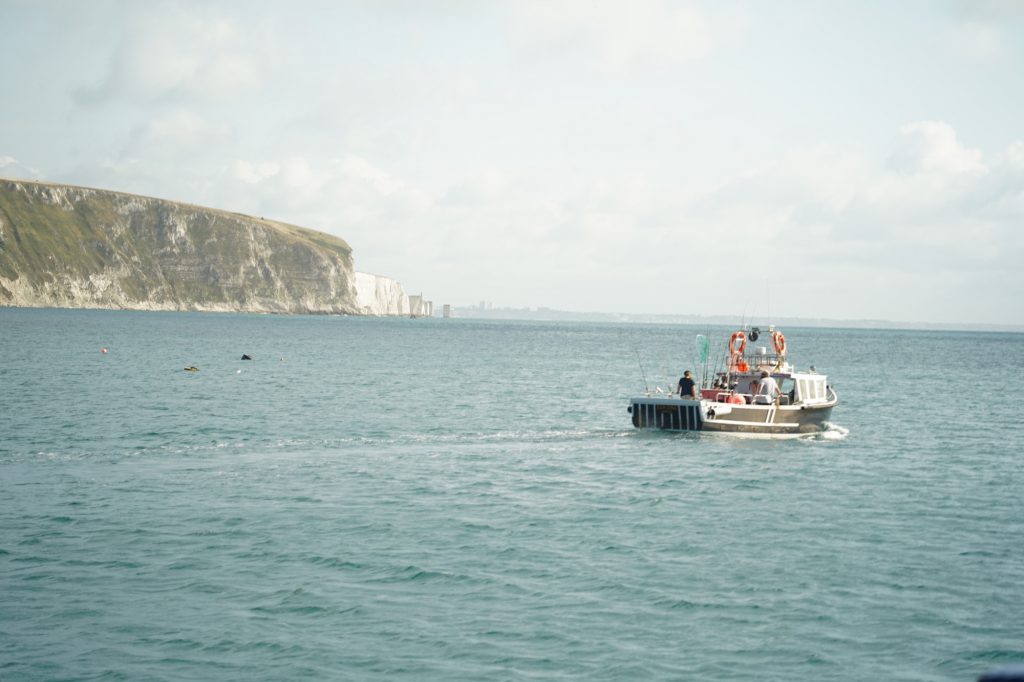The State of our Seas – an Overview of the UK Sea Fisheries
Each autumn the Marine Management Organisation, a public body supported by DEFRA, releases a mega document, 68 pages, summarising the all the numbers about the UK fisheries over the past year. In this article, we delve into these fishery statistics to uncover 10 key insights that every angler should know.
1. A Declining Fleet, but bigger ships

The number of vessels has decreased by around 900 boats in the last decade, dropping to 5,541 vessels. However, the total weight of the ships has stayed relatively constant at 203,000 tonnes. This really signifies a notable move towards the creation of larger and more substantial vessels.
2. Fewer Fishers at Sea
The UK fishing industry has undergone a significant transformation in recent years, with a shift towards larger vessels with greater fishing capacity. Larger vessels require fewer crew members to operate. This has led to a decline in the number of fishers working on UK-registered boats, with a reduction of just over 2000 in the last 10 years.
3. Shifting Fishing Efforts
Since 2004, there has been a significant decline in fishing activity undertaken by vessels over 10 meters in length. This reduction, measured in kilowatt days at sea (kW days), is approximately 40%. kW days is a useful measure of fishing effort because it takes into account both the size and the activity of fishing vessels.
The decline in fishing effort is primarily driven by a decrease in effort in the demersal trawl for whitefish and beam trawling for sole over the last 20 years. This reduction is likely due to a number of factors, including decommissioning exercises carried out by UK fisheries administrations, which aimed to reduce these practices. Additionally, changes in fishing regulations and quotas have also played a role in the decline of these fishing methods.
Between 2021 and 2022, there was a further 3% reduction in fishing effort. This ongoing trend suggests that the fishing industry is continuing to undergo significant changes. It remains to be seen how these changes will impact the future of the industry.
4. The UK is a net importer of fish
Crazy isn’t it? but the UK actually imports fish more fish than it exports, with a trade gap of around 316,000 tonnes. In 2022, the UK imported 647,000 tonnes of sea fish valued at £3.7 billion, while exporting 330,000 tonnes worth £1.7 billion. With the biggest net import by far being tuna importing over 100,000 tonnes! Our biggest net export is mackerel at 58,000 tonnes.
5. Shrinking UK Fleet
Over the past three decades, the number of UK fishing vessels has reduced by 52%, from over 11,000 vessels to approximately 5,500. The power (kW) of the UK fleet has also decreased by 41%. This transformation is due to both national and international policies aimed at ensuring the sustainability of fish stocks, including greater controls on fishing opportunities and fleet capacity reductions through decommissioning exercises.
6. A few big boats catch most of the fish
The vast majority of fish caught by UK vessels is landed by a small minority of the fleet. In fact, just 4% of UK vessels, the largest vessels that are over 24 meters in length, account for over 75% of the total quantity of fish caught. This is due to their very high fishing capacity and power.
Larger vessels make a significant contribution to the UK fleet’s capacity. While vessels under 10 meters make up 79% of the UK fleet, they only contribute roughly 8% to the fleet’s total capacity. In contrast, larger vessels over 15 meters represent just 10% of the total fleet by number but contribute a massive 85% of the fleet’s capacity. The size of vessels plays a crucial role in determining the quantity and value of fish landings. The small vessels tend to target higher value catches such as shellfish.
7. UK vessels landed over £1 billion worth of sea fish
In 2022, UK vessels landed around 640,000 tonnes of sea fish. This was actually a small decrease in the quantity compared to 2021, but due to increased prices, the total value increased by 13%.
8. High-Value Species
Sole, turbot, and halibut command the highest prices among demersal species landed by the UK fleet, ranging from £12,000 to £15,000 per tonne in 2022. These high prices can be attributed to reduced supply following the introduction of the Sole Recovery Zone.
9. Mackerel Dominance
Mackerel holds a special place in the UK’s fishing industry. Mackerel is the main catch by far, it alone accounts for about a third of the total UK catch. But you might find the location and time of year of this fishery surprising.
Mackerel is actually a winter fishery for the bigger ships, and the main fishery is actually primarily in the North Sea off the coast of the Shetlands.
Around 97% of all UK Mackerel landings are in January, Febuary, October and November. Towards the end of the year catch numbers drop due to ships reaching their yearly quota.
10. Emergence of Shellfish fisheries
Since the 1940s, shellfish landings have nearly quadrupled, from 32 thousand tonnes to around 115 thousand tonnes.
This has been due to several factors: for shellfish species, there are very few catch quotas, there are only quotas for brown crab and langoustine, whereas fin fish have a lot of quotas, pushing fishers to shellfish. Another factor is the increasing demand for shellfish, pushing up the price, and making it more rewarding to target them.
